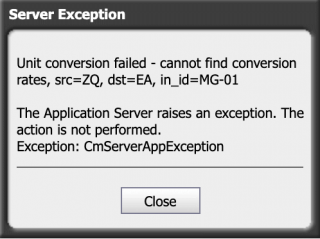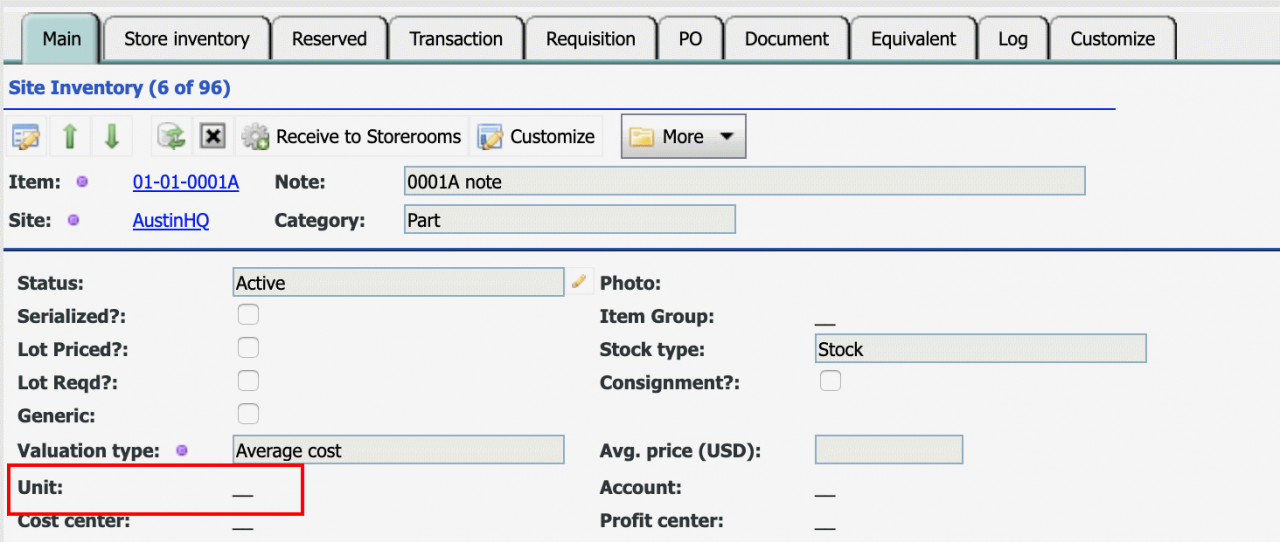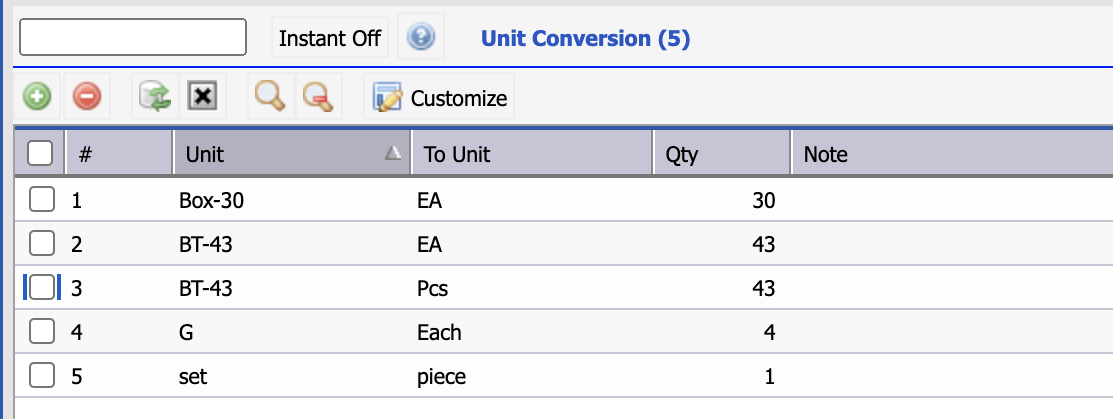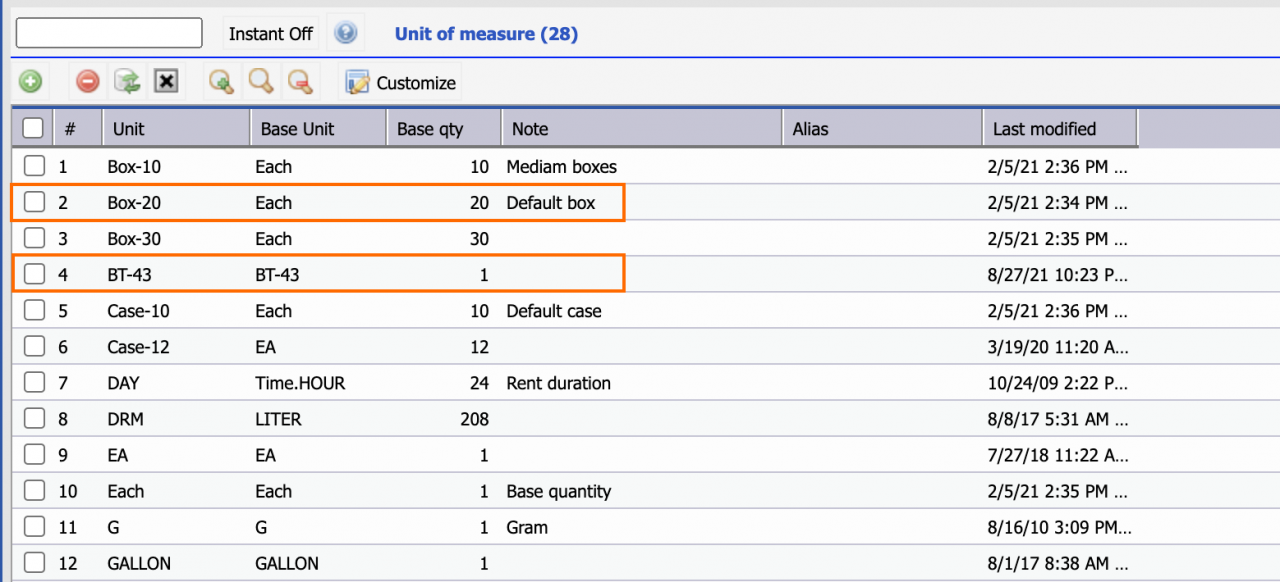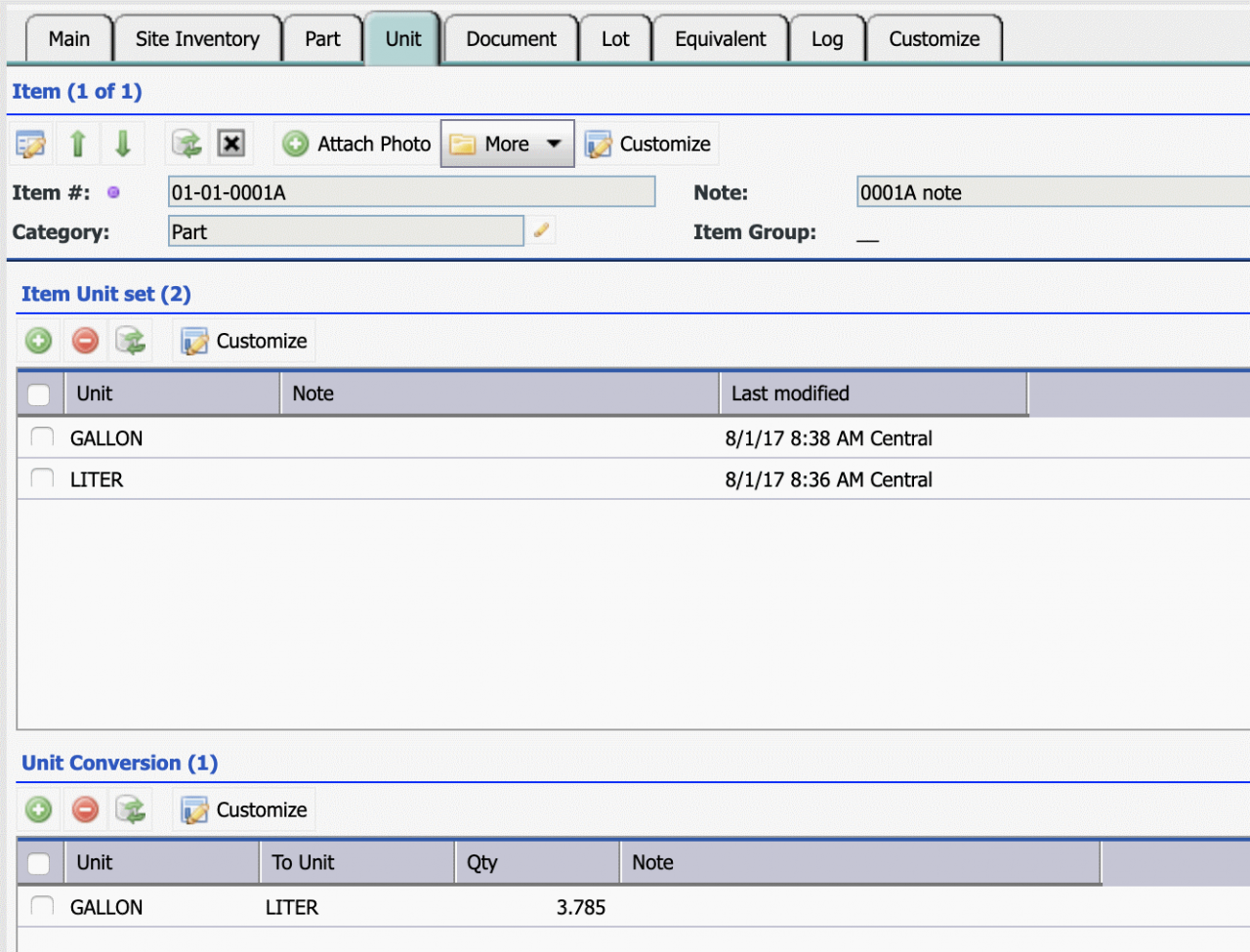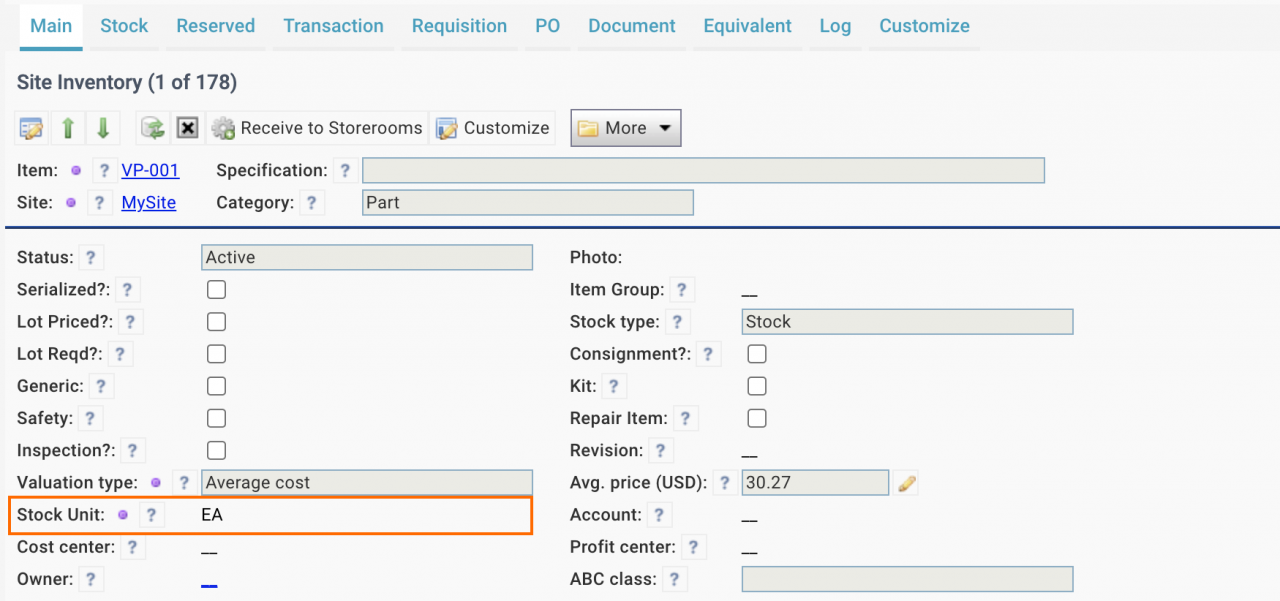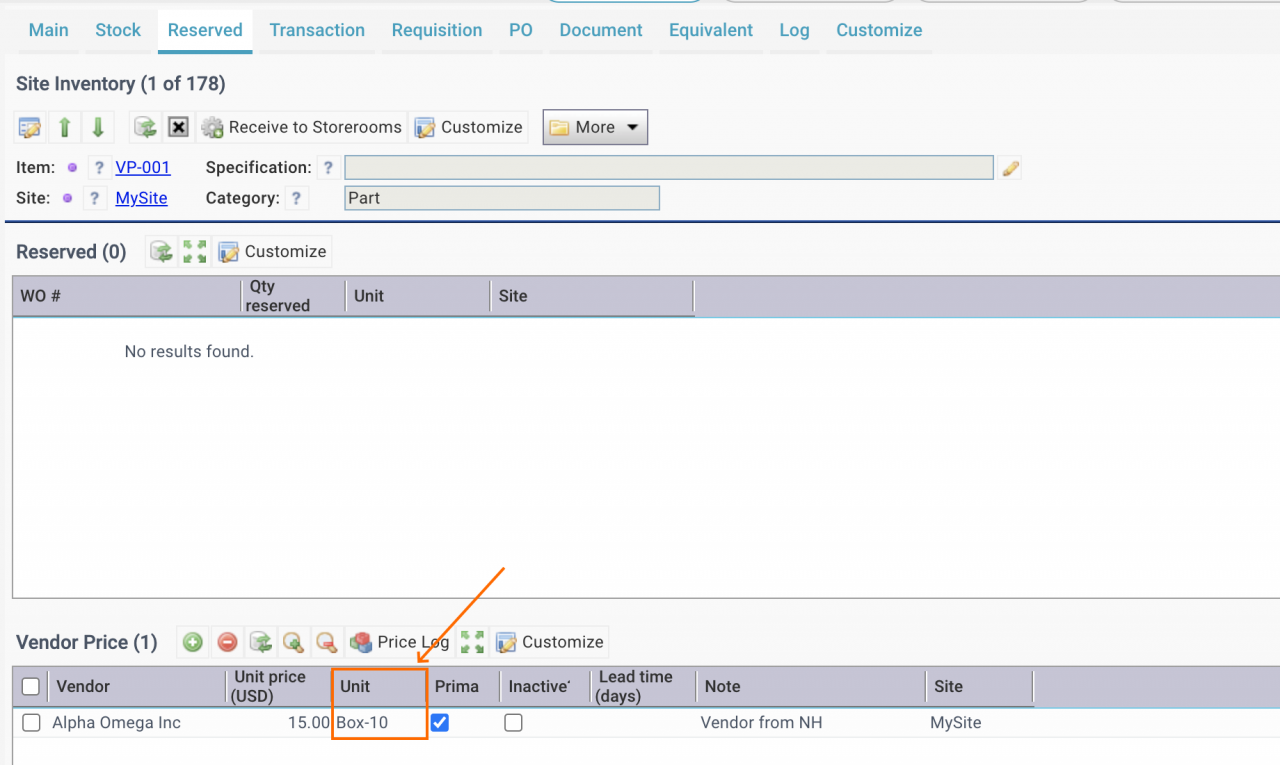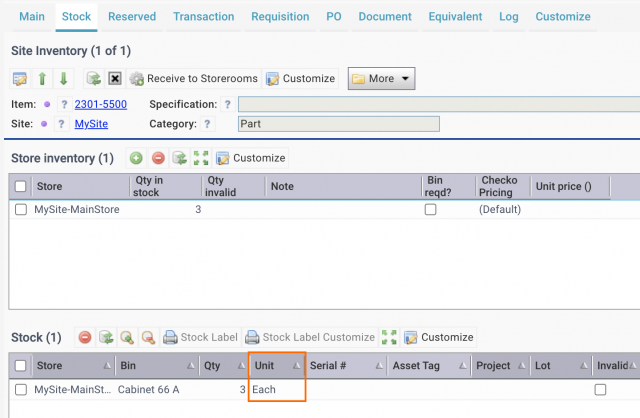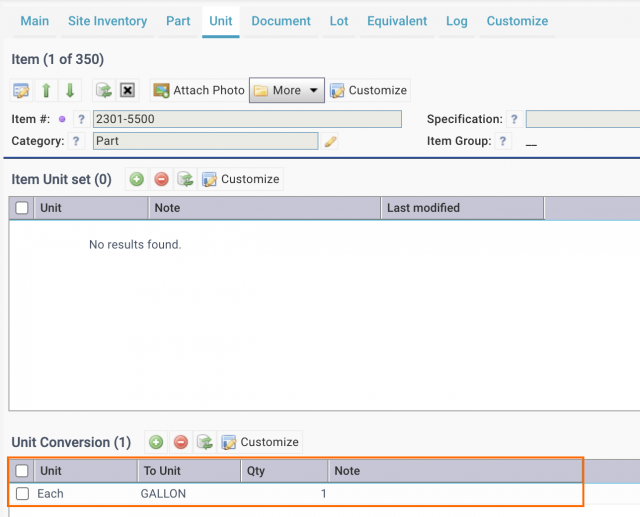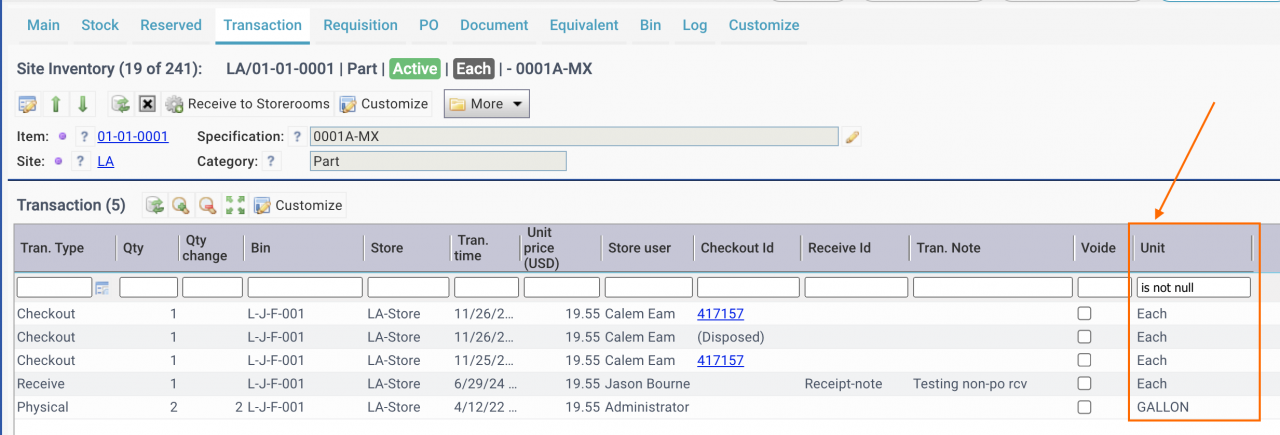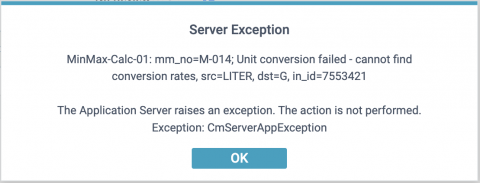Calem Blogs
How to Set up Units and Conversion
Units, or Units of Measure (UOMs), are useful in managing inventory items. They allow items to be ordered and stocked in different units. For instance, washers are ordered from vendors by boxes (10 in a box), but checked out individually.
- A site item may have a stock unit.
- It may have different order units when ordering from vendors.
- It is important that vendor units and stock units have conversion rates defined (discussed below). Otherwise, receiving orders to stock will fail with an error message of "Unit conversion failed..." including source and destination units (see screenshot below).
1. Unit and Conversion
Adding an entry in "Unit Conversion" will fix the error above.
- Units are defined in Inventory | Codes | Unit of Measure
- Unit conversions are defined in Inventory | Codes | Unit Conversion
2. Unit Conversion at Unit
In some cases it is possible to define a unit conversion at Units for intrinsic conversion. For instance, a unit of "Hours" has a base unit of "Minutes", and the conversion is 60. To simplify conversion maintenance, you may choose to use "Unit Conversion" screen to manage the intrinsic conversion as well.
3. Item Unit and Conversion
The Unit and Conversion in the sections above are sufficient for inventory management. However, you could choose to overwrite a conversion at item level, or simply add a new unit and conversion. For instance,
- The conversion from "Case" to "Bottle" is 12 in the "Unit Conversion" table.
- For item "TEST-001" the "Case" to "Bottle" is 24.
- You may add a new unit "Case24", and a new entry at "Unit Conversion" table.
- Alternatively, you may define a conversion from "Case" to "Bottle" for item "TEST-001" only.
- Menu path: Inventory | Unit Tab | Item Uom Set
- List of Units allowed for this item
- Menu path: Inventory | Unit Tab | Unit Conversion
- Item conversions override the conversion rates in Unit and Conversion above.
4. Vendor Units
Vendor units and prices are defined based on vendor catalogs or contracts. They are used when placing orders.
- Menu path: Purchase | Open | Vendor Prices
- You may configure conversion rates from order units to stock units when they are different. Otherwise, receiving to storeroom will fail.
5. Stock vs. Vendor Units
Stock Unit configured in Items are used in operation while Vendor Units are used in ordering from vendors.
- Stock units are converted to vendor units when ordering parts based on min/max by Calem.
- For instance, the stock quantity to order is 30 pieces (EA) based on min/max, while the primary vendor unit is Box-10 (10 pieces in a box). When a REQ is created by Calem based on min/max (auto-generated by configuration, or manual created from Order List by Min/Max in Inventory Report), the quantity of 3 with unit of Box-10 will be ordered from the primary vendor.
- The unit conversion can be defined from Box-10 to EA so the conversion can be done by Calem when using vendor units for ordering.
6. Unit Refactoring Process
There are cases when a unit is not correctly set for an item. A refactoring process is necessary to correct the unit. The following is an example.
- UOM "Each" has been used by many items in an implementation.
- One item with "Each" as UOM needs correction.
- The correct UOM is "Gallon".
- The steps to refactor the UOM to "Gallon" from "Each" are:
- Create a new UOM "Gallon" if "Gallon" does not exist.
- Modify the Item's UOM to "Gallon" which changes the item and its inventory's UOM to "Gallon".
- Go to the Unit tab of the item, add a conversion of 1 from "Gallon" to "Each".
- The conversion tells Calem how to calculate stock levels from history and current UOMs.
- Existing transactions is still in "Each" (no change to the history).
- New transactions will be in "Gallon".
After modifying Item's Unit to "Gallon".
7. Inventory Unit Modification
An item may be managed as inventory in sites. If the stock unit of an inventory is not the same as its item, simply modify the stock unit of the site inventory to unit of the item.
- An error is raised when modifying the unit of a site inventory to a unit that is not the same as that of its item.
- To change the stock unit of all site inventory to a new one, simply modify the stock unit of the item which cascades the unit change to all inventories of the item.
8. Unit Conversion Error in Auto Min/Max Process
An error message may be raised when executing auto min/max process (Admin | Open | Auto Min/Max Processes). A conversion should be defined to address the issue.
- Auto Min/Max processes review all the inventory transactions for an inventory.
- Transactions may be using units in the past that is not the current unit for an inventory - a sample transaction list is show below.
- When different units (Each and Gallon) are used in transactions and there are no conversion defined between them, an error is raised (screenshot below).
- Vendor order units may be included in the calculation of Auto Min/Max processes. If an inventory's unit is different from its vendor order units, and there are no conversion defined, the same error message below may be raised.
- You may add a conversion (described above) to address the issue.
9. Item Unit Reuse
This is an advanced feature for re-use management. You can achieve the same function with Item Unit (Section 3 above). It is available as an option to reuse item unit and conversion.
It is possible to reuse the item units (section 3 above) in other items by setting the "Unit item" field. This is a convenient feature to avoid the duplicate unit and conversion entries by items.
Additional resources
Related Posts
By accepting you will be accessing a service provided by a third-party external to https://calemeam.com/
